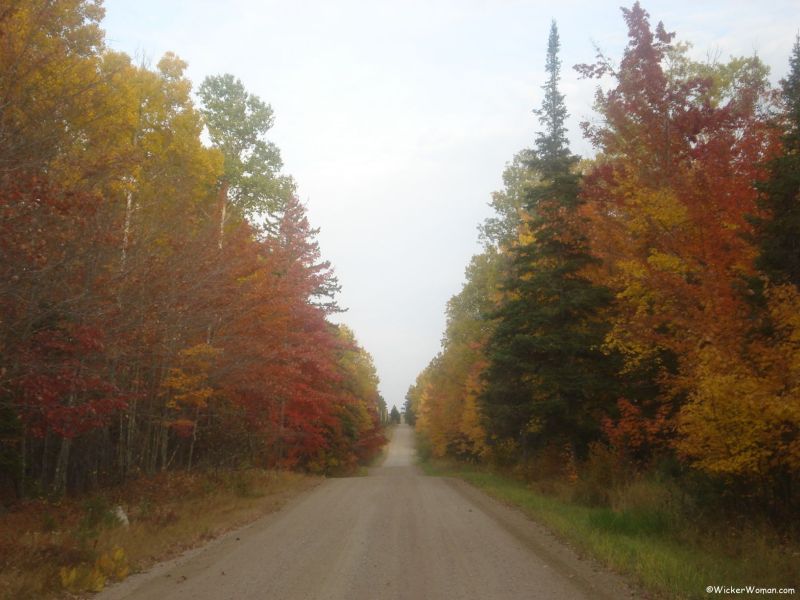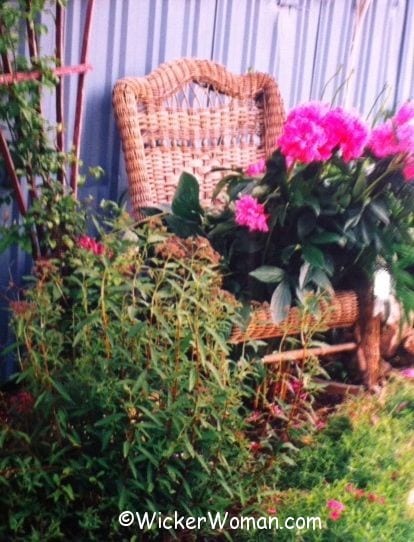The topic of this blog post is the Tamarack tree, also known as the Eastern larch, which is native throughout northern North America and very prolific up here in the northland boreal forest of Minnesota.
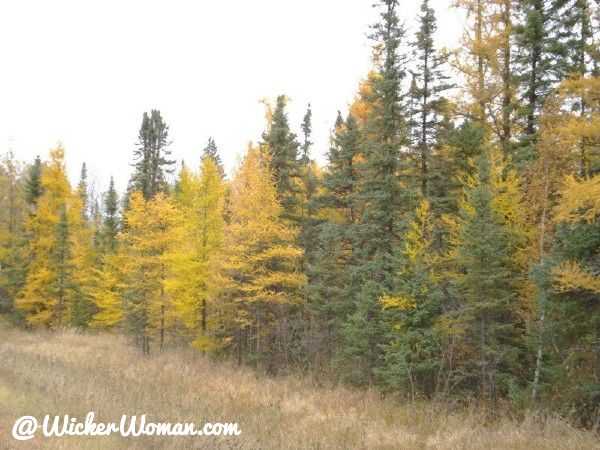
Ever since we moved up here in 2002, I’ve been totally fascinated and in love with this majestic, almost magical, ethereal tree with its light, wispy branches.
Tamarack Habitate
In the US, the Tamarack is confined mainly to the northeastern states, including Maine, Vermont, New Hampshire, Massachusetts, Minnesota, and Wisconsin.
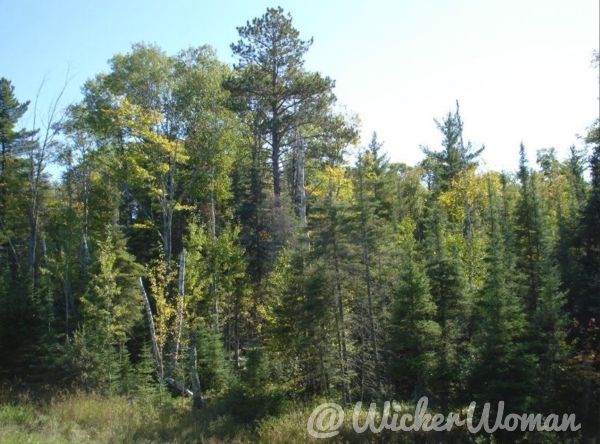
Tamaracks grow on moist, poorly-drained, loamy soils along streams, lakes or swamps, and peat bogs in USDA Hardiness Zones 2-5.
And on our property, only 40 miles from the Canadian border, there were a lot of boggy, wet spots where the tamarack was very prolific.
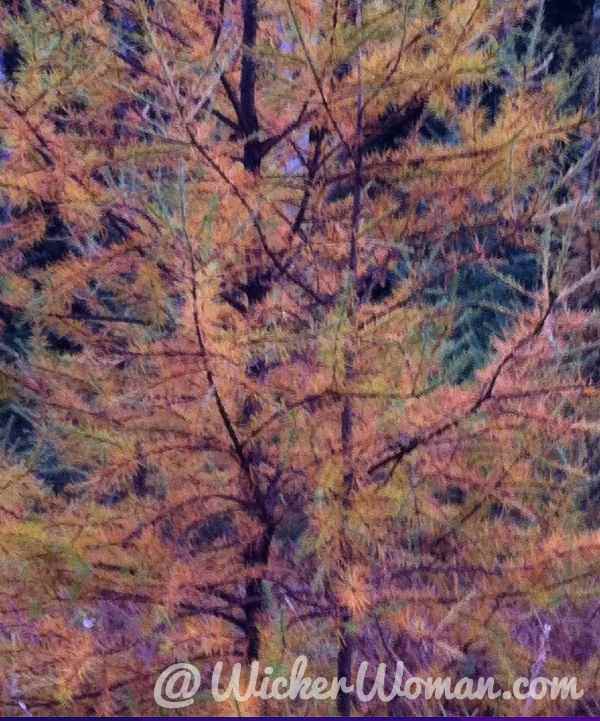
Characteristics of the Tamarack
Larch or tamarack is not a true evergreen tree like pine and fir trees. They are the fastest-growing deciduous conifers that lose their inch-long needles each winter.
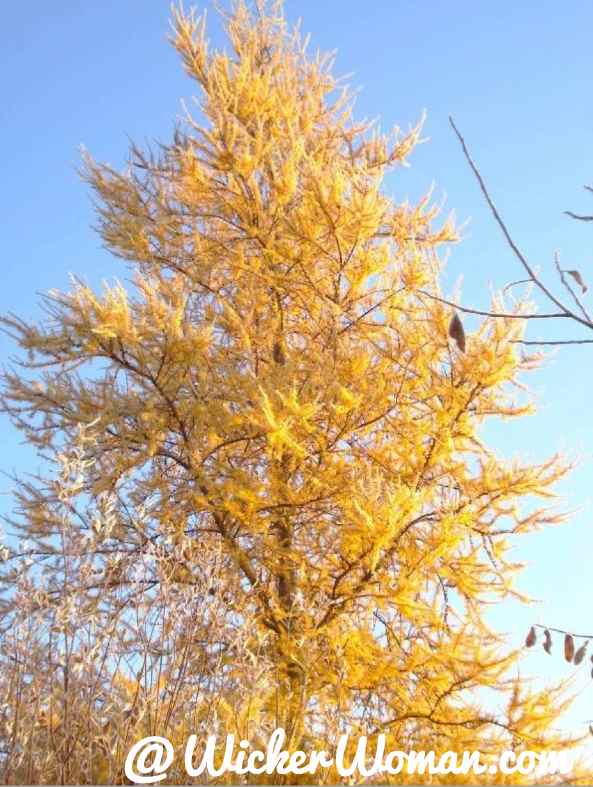
These trees typically grow to 50 to 75 feet tall and can live to be over 100 years old. They have very shallow root systems and are easily blown over by high winds. And are susceptible to fire too because of this and their thin bark.
Each season brings a new appreciation of this tree for me, which others think of as a common, inferior “garbage” tree.
Watching the color change from golden-yellow-green in the spring and in the summer, a warm blue-green.
And then in the fall, the needles turn a rich golden-tan, and then the eventual loss of all the needles during the late fall and winter; it’s really quite a spectacular phenomenon to me.
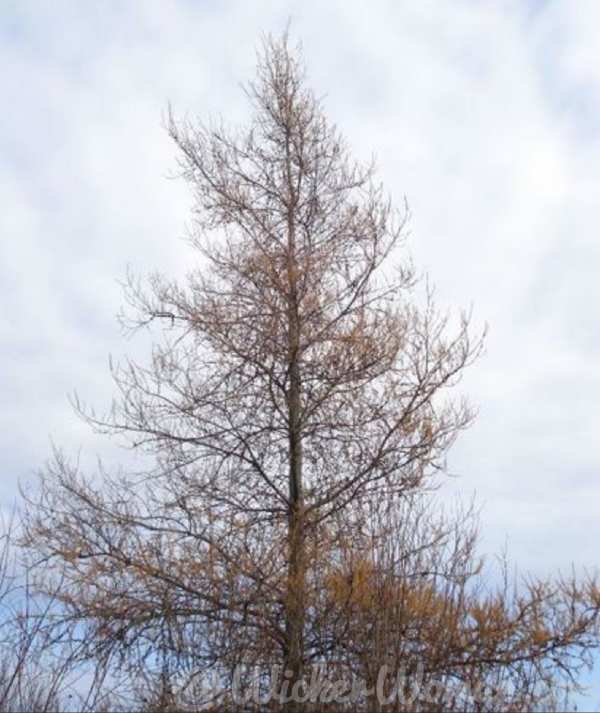
The stems of the branches are yellowish brown, and the needles are in little clumps with small, egg-shaped cones.
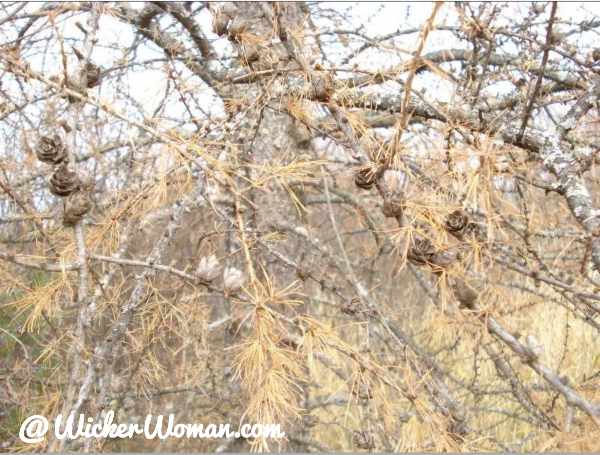
Uses for the Tamarack Tree
These branches were frequently bundled up and used by the Native Americans to create goose decoys. The roots were used to sew birch bark to make the canoes and for sewing bark baskets.
People have also used the tamarack wood for the runners on dog sleds and for fence posts, too.
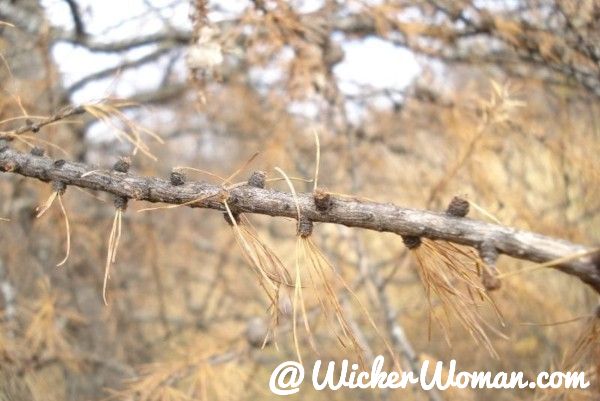
And since larch is known as “the hardest of the softwoods” and is resistant to denting, it has become the preferred choice of flooring installers over other softwoods used for modern flooring.
After seeing all these pictures and reading about the Tamarack or Larch tree, wouldn’t you agree it’s a pretty amazing tree?
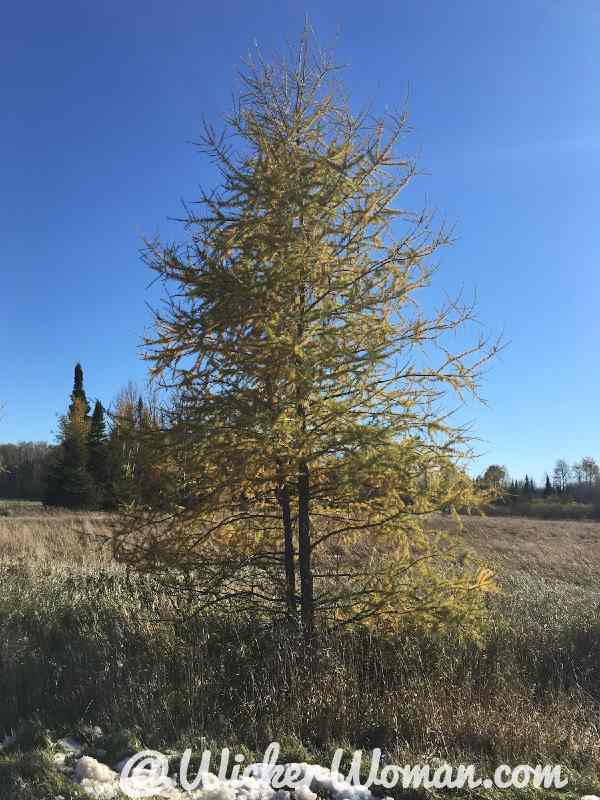
P.S. Forgot to mention that the last picture here is of our little Tamarack tree right out the back door of our studio/garage. It’s where I harvest the branches to use as weavers in my antler basket artistry.

What are your thoughts about this blog post?
Leave your comments below and share with your social networks!
~~Live Well, Laugh Often, Love Much ~~
Happy Weaving, until next time!



